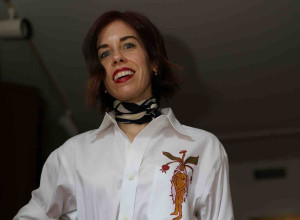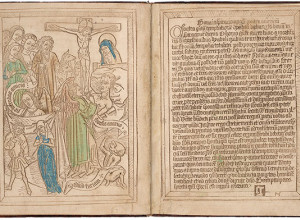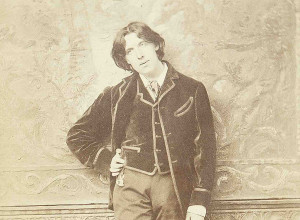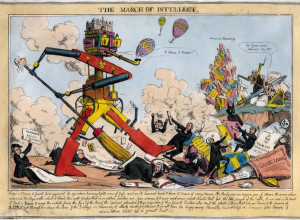Bright Young Collectors: James Freemantle
Our Bright Young Collectors series continues today with James Freemantle, collector of Private Press books. James is a contributor to The Private Library, the journal of the Private Libraries Association, as well as Parenthesis and Matrix (Whittington Press), as well as being a member of the Oxford Guild of Printers and Double Crown Club, and proprietor of the recently established St James Park Press. James has been a Judge at the annual Fine Press Fair in Oxford, has written the exhibition catalogue entry for I.M. Imprimit for The Private Press Today exhibition at St. Brides, and runs a Twitter page on the Art of the Book.
Where are you from / where do you live?
I was born and live in London, England, now near St James's Park, having been brought up in the English countryside in Buckinghamshire.
What did you study at University? What do you do now for an occupation?
I studied English Literature with Film before moving on to a career in Law. I am now a Litigation Partner at a London law firm.
 Please introduce us to your book collection. What areas do you collect in?
Please introduce us to your book collection. What areas do you collect in?
Almost exclusively Private Press (Fine Press) books, although as an extension of this books and prints of typographic, artistic or bibliographic interest. This could be anything from a book such as A Specimen Book of Pattern Papers (1928) by the Curwen Press to large coloured linocuts by the artist Clifford Webb, to a leaf from an incunabula by William Caxton. As there have historically been a large number of private presses, however, I buy predominantly English presses of the twentieth century.
From the earlier presses, I have a large amount of ephemera from the Daniel, Kelmscott and Doves Presses, which can sometimes be rarer than the books themselves and give enough of the feel of those presses to placate the desire for the books (although of course I wouldn't turn down a complete collection of any of these). I actually buy ephemera and archival material for all the Presses I am interested in, for an insight into the history of their production.
For the Essex House, Ashendene, Eragny and Caradoc Presses, I buy the books too. For all of these, I tend towards copies printed on vellum, which are usually only printed in a handful of copies, or with some association to the printers, meaning copies inscribed by Hornby, Pissarro and others. For the Essex House Press, for example, I have a unique copy of the Essex House Song Book, bound by Charles McLeish (who worked at the Doves Bindery under Cobden Sanderson for many years) for C. R. Ashbee's daughter, in which Ashbee has interleaved pages printed on vellum, paper as well as pages written and decorated in his own hand.
From the next generation of Presses, I have an almost complete set of Golden Cockerel Press books, including (almost as an ephemeral item) a single volume of The Canterbury Tales, illustrated by Eric Gill, printed on vellum. The Golden Cockerel Press was my first serious foray into the private presses, and as such I located as much additional material as I could, including proofs, original designs, correspondence, prospectuses, catalogues, publisher's files, engravings, binding blocks, copper plates and more. I am slightly more specific for the Gregynog Press, for which I only look for the special bindings by George Fisher, although these are exceedingly rare, as well as the prospectuses for the titles issued by the Press. Similarly, for the Hogarth Press, I only buy those editions that were hand-printed by Virginia Woolf.
Of the more modern Presses, I buy books by Presses that are no longer printing, such as Gogmagog, Twelve by Eight, Workshop, and Locks Press, and from those still active, such as the Reading Room, Parvenu, Grapho Editions, I.M. Imprimit, Whittington, Fleece, Salvage and Incline Presses. It is usually easier to locate the ephemera and production material for these modern Presses, which can include related artistic material. For example, for Gogmagog and the Workshop Press, I have a number of original prints and paintings by the printers Morris Cox and Mark Arman, who ran those Presses, and by further example a vast number of broadsides from the Whittington Press.
Of the American Presses, I have dabbled with the Arion Press and Barbarian Press, usually because they have printings of wood-engravings which appeal. There are various other Presses that are represented within the collection, but not to the same degree as those mentioned.
 How many books are in your collection?
How many books are in your collection?
I haven't counted, but there must be over a thousand, not including bibliographic books that aren't printed by any particular Press, which I try to keep to a minimum. Presses don't generally print that many titles, as of course it is all done in limited editions and by hand, so one Press may only have half a dozen titles under their imprint, whilst the Golden Cockerel Press reached 214 titles. When I add archival material and ephemera to the number of books, there is possibly the same again in terms of floor space.
What was the first book you bought for your collection?
I actually discovered Private Press books because I was interested in Milton's Paradise Lost, having studied it at school. We were given a school copy of the book with an illustration by William Blake on the cover, and that image (and indeed that book) has never been forgotten. I took an interest in the publishing history of Paradise Lost, which was first printed in 1667, and bought early editions, including those illustrated by John Martin, Fuseli and others. Whilst I was reading around the subject, I found and bought copies of the Golden Cockerel Press as well as Doves Press editions of Paradise Lost. Both are extraordinarily attractive printings, and immediately introduced me to what a Private Press could offer. My first most memorable and serious purchase, however, was an English first edition of James Joyce's Ulysses (John Lane, Bodley Head, 1936), which I bought almost entirely on account of it being in a slipcase covered in Paul Nash patterned paper, with an Eric Gill designed bow on the front, bound in vellum, limited to 100 copies and signed by Joyce. These sort of elements are more synonymous with a Private Press book, than a commercial edition. It is still the most expensive single book I have ever bought, from a Sotheby's auction. I exchanged it probably a year after buying it, for an Ashendene Press book printed on vellum and a group of Hogarth Press hand-printed books.
How about the most recent book?
Books are being added regularly, so most recently, aside from books by those Presses already mentioned, I have bought books from the Fanfrolico, Seven Acres, Simon King, and Kit Kat Presses, as well as Rampant Lions Press books illustrated by J. G. Lubbock.
 And your favourite book in your collection?
And your favourite book in your collection?
Every Press brings something different. As much as the art of the book is important, so too is the story behind it. Being handmade books, there is usually a single or small number of creative minds behind the book and you can usually get a sense of this when you see the output of each different Press. In that sense, no single Press is alike. Books from the Golden Cockerel Press, for instance, are very different from those printed by the Caradoc Press.
My favourite book would therefore have to incorporate great artistic and typographic design, coupled with an interesting story, as well as being a desirable rarity. I could therefore mention, for its typographic elegance and fantastic Gwen Raverat engravings, the Japanese Vellum printed Daphnis and Chloe (1931) from the Ashendene Press, of which only around ten exist due to the remainder of the printed sheets being destroyed due to problems with the printing, for which I wrote an article on this for The Private Library; or indeed the Book of Job, printed on vellum with hand-illuminated initials and illustrations, from the Caradoc Press, of which only seven are reported to have been completed, but this may be as much because I am also writing a book on the history of that Press at the moment.
Best bargain you've found?
I have always been impressed by the generosity of printers to literally give away things they may print by hand. So many of the Presses that are still active are this generous, so in the sense of the best bargain, anything like this would be top of the list.
If I were to name something I have found and bought, one that springs to mind would be a copy of The Praise and Happinesse of the Countrie-Life (1938) from the Gregynog Press. It is one of the specially bound copies, of which there are only twenty, and I found it on eBay. The seller had not known it was one of the specials, so it was not expensive. The reason it sticks in the mind though, is because, so I am told by the expert on these matters David Lewis, the original subscriber (private presses often had subscribers for their publications) was a Senator David Aiken Reed (born in Pittsburgh, 1880 - 1953), and his collection of special Gregynog bindings had been consigned to the Princeton Library, but at the time they were shipped, this and one other title were seemingly never received. It turned up, again unmarked as a special copy, at an auction in Philadelphia decades later, where the eBay seller had bought it in a box of books unknowingly and sold it on through the internet. Knowing it was one of the specials, I bought it.
How about The One that Got Away?
I will always feel like I have missed out on great private press books. There are three moments that particularly stick in my mind though. The first is the time that two large collections of Ashendene Press books were being sold, one by a dealer and another through an auction abroad. At the time the dealer had them, I wasn't really looking to buy Ashendene Press books, despite her showing them to me before she had even issued the catalogue when I could have cherry-picked any titles I wanted (they all sold almost immediately), and even when I was buying them, I missed a great auction sale and only found out about it when the auction catalogue showed up for sale on the internet days after the event. There are so many titles I would have liked to have from both the dealer and auction. The second is another auction, during which I was so preoccupied with a high-ticket item that I was bidding on (and never won), I completely overlooked some original correspondence from C. R. Ashbee of the Essex House Press where he writes about the setting up of the Press. When it is a unique item like this, you know it is very unlikely you will see it again in your lifetime. The last is a final auction offering, being an almost complete collection of Whittington Press books. There were literally hundreds of books in one Lot and it went for relatively little money. I never knew about the sale, but if I had at the time, I would have gone for it. For the most part, however, I am usually quite bold with my purchases and would rather regret buying a book, than regret having turned it down.
What would be the Holy Grail for your collection?
There are three titles that I would really consider top of my list. The first is the Song of Songs (1902) from the Ashendene Press. All forty copies are hand-illuminated by Florence Kingsford and printed on vellum. The second and third would be considered the black tulips of the private press world, being Whym Chow (1914) from the Eragny Press, printed in twenty-seven copies and the one title from the Press that never appears, and the suppressed illustrated edition of the Lovers Song Book from the Gregynog Press, printed in only nine copies with wood-engravings by Blair Hughes Stanton that were considered too risqué at the time, so was only published in 1933 without the illustrations.
Who is your favourite bookseller / bookstore?
Private Press books are sold through shops, dealers by appointment only, auction house and online. It is therefore necessary to look everywhere. Those I go through regularly include:- shops: Collinge & Clarke, Claude Cox Rare Books, Sophie Schneideman, Blackwells Rare Books, Tindley and Everett; dealers: Barrie Marks, Michael Taylor, Colin Franklin; auction houses: Sothebys, Christies, Bonhams, Bloomsbury; internet: eBay, Abebooks; but there are numerous others that I look to, including Vincent Barlow, Julian Smith at Clarendon Books, Besleys, Peter Ellis, Peter Nicholls at Boxwood, Bayntuns, Peter Harrington, Woodbine, Wykeham, Colin Page et al. and in America there are plenty, including Veatchs, Bromers, Oak Knoll, John Windle and others.
What would you collect if you didn't collect books?
I would have to say prints and artwork, as I almost do already given the large amount of wood-engravings, linocuts, etchings, paintings and other prints I have by artists connected with the private presses, and some unconnected.
















